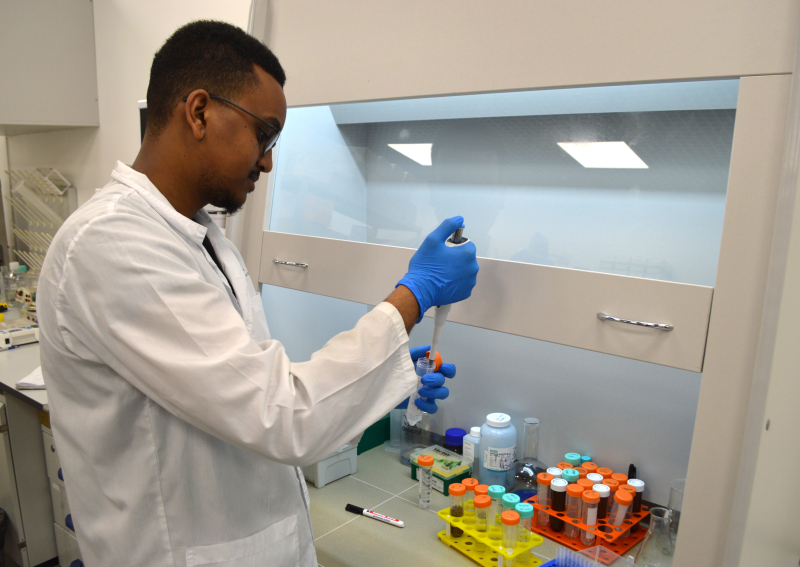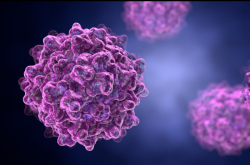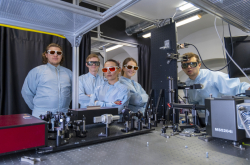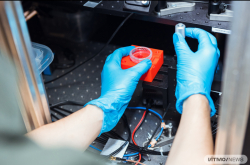One of the approaches to cancer treatment is via anti-cancer agents, such as antisense oligonucleotides. An antisense oligonucleotide (ASO) is a short DNA fragment that binds messenger RNA (mRNA) and destroys it with a protein called RNAse H. Researchers from ITMO have developed a binary antisense oligonucleotide (Bi-ASO). It consists of two chains of oligonucleotides (short fragments of DNA that are chemically synthesized). One part of each chain finds the RNA molecule of a cancer marker, and the other binds to the messenger RNA of a housekeeping gene and cleaves it. This technology destroys only cancer cells and leaves the healthy ones untouched, as long as they do not contain cancer markers.
However, even healthy cells can contain several cancer markers but in low concentration. For example, the miR17-5p can be considered as a cancer marker since it’s involved in the development of lung, breast, cervical, pancreatic, and colorectal cancer, but only if it is overexpressed, meaning that it exists in a huge number of copies in the cell. At low concentrations, it will be considered as normal microRNA responsible for regulating different biological processes. A binary antisense oligonucleotide can still use it as an activator to trigger cell death and cleave vital housekeeping genes in both cancer and healthy cells, which is not preferable.

The team of researchers who developed the DNA constructs. Photo by Alena Mamaeva / ITMO.NEWS
Another disadvantage of traditional anti-cancer agents is their choice of target. They cleave overexpressed oncogenes responsible for the development of the disease, not housekeeping genes that maintain the vital functions of cancer cells. As a result, cancer cells may stop to propagate but they will remain alive in the body even after treatment which is not effective.
In order to improve the selectivity of antisense oligonucleotides and teach them to cleave the target mRNA of the genes of interest, specifically in cancer cells, the researchers from ITMO’s Nucleic Acid Nanotechnologies Lab and ChemBio Cluster have developed the world's first DNA construct based on a binary antisense oligonucleotide with a threshold function. It precisely determines the concentration of cancer markers and cleaves the target messenger RNA of the gene only when the concentration exceeds a given threshold. This solution will make anti-cancer therapy more precise and safe, as healthy cells will remain untouched.
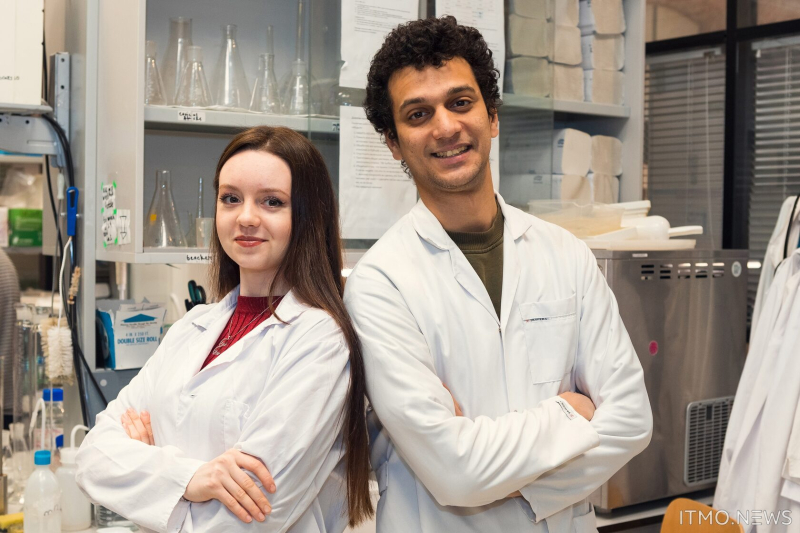
Valeriia Drozd and Ahmed Eldeeb. Photo by Dmitry Grigoryev / ITMO.NEWS
“We based this solution on another compound we developed – a binary antisense oligonucleotide. Its two chains were reconstructed as two variants of a DNA construct with a threshold function. While the first variant binds to two cancer marker molecules in a cell, the second variant needs to bind to three. By choosing the variant, we can control the amount of cancer markers needed to launch the anti-cancer therapy and whether a low or high concentration of cancer markers is required – all in order to distinguish between cancer and healthy cells. Now the antisense oligonucleotide is more selective, triggering the death of cancer cells through their housekeeping genes instead of every cancer and healthy cell containing at least one cancer marker molecule. This ensures a safer procedure,” explained Valeriia Drozd, one of the paper’s authors and a PhD student at ITMO’s ChemBio Cluster.
Experiments have also demonstrated that the DNA construct with a threshold function can distinguish between closely related cancer markers.
“For example, there are two similar microRNAs, miR-17a-5p and miR-20. The first one, when overexpressed in oncogenesis, can cause liver cancer, gastric cancer, or colorectal cancer, while the second one plays a role in regulating cell proliferation, differentiation, and apoptosis. However, the second one can also be considered a cancer marker. But these cancer markers differ from each other by only two nucleotides. If the DNA construct mistakenly chooses the wrong compound as an activator, the therapy will be triggered in a normal cell, and this will have a negative impact on the body. We have taught our compounds to distinguish between similar sequences and use only the ones we need as activators,” shared Ahmed Moustapha, the article’s first author and a PhD student at ITMO’s ChemBio Cluster.
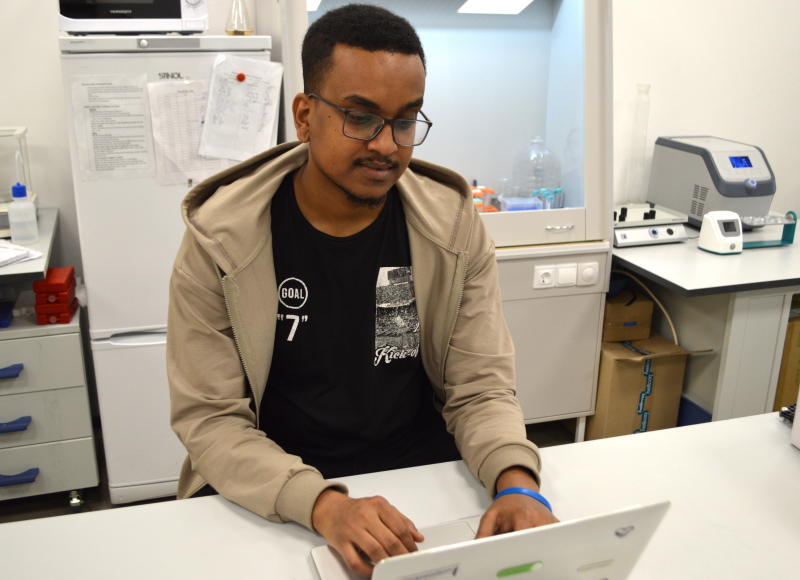
Ahmed Moustapha. Photo by Alena Mamaeva / ITMO.NEWS
With the new DNA construct from ITMO, it will be possible to make target therapy not only safer and more precise, but also personalized. Every type of cancer has its own markers and vital housekeeping genes. That’s why it’s important to analyze the cells of a particular patient to select a personalized DNA construct that would treat their particular cancer specifically and efficiently.
“We’ve tested our DNA construct in vitro and are now planning to move on to cell culture testing. For this, we will first have to develop a chemical modification of the DNA construct to protect it from nucleases – the enzymes that cleave foreign nucleic acids in cells. In the future, the DNA construct will become a part of a DNA nanobot with the functions of delivery, sensing, computing, and therapy (actuating). The compound will selectively react to cancer-related RNA and activate apoptosis (controlled death of cancer cells),” concluded Ahmed Eldeeb, the paper’s corresponding author, a graduate of a PhD program at the ChemBio Cluster and the head of the Nucleic Acid Nanotechnologies Lab.
This research project is supported by ITMO University’s 2030 Development Strategy.
